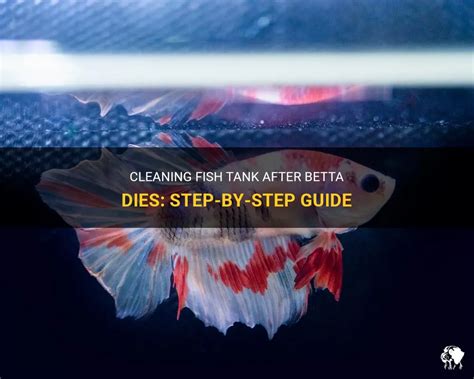Fish Tank Maintenance: After Your Fish Dies
Losing a fish is heartbreaking, but it's crucial to understand the necessary steps for maintaining your aquarium's health after such a loss. Neglecting proper procedures can lead to further problems, potentially affecting your remaining fish and the overall ecosystem of your tank. This comprehensive guide details the essential maintenance tasks following the death of a fish, addressing common concerns and providing valuable insights for responsible aquarium care.
What to Do Immediately After a Fish Dies?
The first step is to remove the deceased fish from the tank as quickly as possible. Leaving a dead fish to decompose can rapidly contaminate the water, releasing harmful ammonia and other toxins that will negatively impact the health of your other fish. Use a net to carefully remove the fish and dispose of it appropriately – flushing it down the toilet is generally acceptable, but check with your local waste disposal guidelines.
Important Note: Before removing the fish, observe it closely. If its death was unexpected and other fish show signs of illness, immediately quarantine any exhibiting unusual behavior and test your water parameters (see below).
How Do I Clean the Tank After a Fish Dies?
Cleaning your tank after a fish dies involves a multi-stage process:
1. Water Changes:
Perform a partial water change (around 25-50%, depending on tank size and filtration). This dilutes the toxins released by the decaying fish. Use a clean gravel vacuum or siphon to remove any debris from the substrate. Be gentle to avoid disturbing your beneficial bacteria too much.
2. Water Testing:
Test your water parameters using a reliable liquid test kit. Check for ammonia, nitrite, and nitrate levels. Elevated ammonia is a major concern after a fish death. Addressing elevated ammonia levels promptly is critical. If levels are high, you may need to perform larger water changes or utilize a water conditioner to neutralize the ammonia.
3. Filter Maintenance:
Depending on your filter type, you may need to rinse the filter media in old aquarium water (never use tap water). Avoid cleaning the filter completely, as it houses beneficial bacteria essential for your aquarium's nitrogen cycle. If your filter is heavily soiled or clogged, consider replacing the filter media (or parts of it, depending on the type).
What if Other Fish Show Signs of Illness After a Fish Dies?
This is a serious concern and demands immediate attention. Isolate any fish showing signs of illness in a separate quarantine tank. Perform larger water changes, check your water parameters frequently, and consider treating the water with a suitable medication (always follow the instructions precisely). Consult a veterinarian specializing in aquatic animals for advice.
Signs of illness to watch out for include:
- Lethargy
- Loss of appetite
- Unusual swimming patterns
- Redness or sores
- Fin rot
- Cloudiness of the eyes
Should I Replace the Deceased Fish Immediately?
Not necessarily. Give yourself time to grieve the loss of your fish. Before introducing a new fish, ensure your water parameters are stable and the tank is healthy. Rushing into getting a new fish may expose it to potential problems if the underlying cause of the previous fish's death is not addressed.
How Often Should I Clean My Fish Tank After a Fish Dies?
The frequency of cleaning depends on the size of your tank, the number of fish, and the type of filtration system you are using. After a fish death, increase the frequency of partial water changes for a week or two, until your water parameters are stable. Then revert to your regular maintenance schedule.
Can I Prevent Future Fish Deaths?
While you can’t eliminate all risks, proactive measures can significantly reduce the chance of fish deaths:
- Regular water testing: Early detection of water quality issues is crucial.
- Proper tank maintenance: Consistent cleaning and water changes are essential.
- Quarantine new fish: Isolate newcomers for several weeks to prevent introducing diseases.
- Research specific fish needs: Understand your fish’s individual requirements for water parameters, diet, and tank environment.
- Observe your fish daily: Early detection of illness can improve the chances of successful treatment.
Losing a fish is a sad event, but by following these guidelines and prioritizing proactive care, you can safeguard the health of your remaining fish and maintain a thriving aquarium environment. Remember that responsible aquarium keeping involves continuous learning and adapting to the needs of your aquatic companions.

